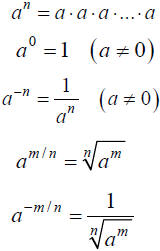- Home
- INTERMEDIATE ALGEBRA
- Course Syllabus for Algebra I
- Mid-Plains Community College
- FRACTION OF A WHOLE NUMBER
- Systems of Linear Equations
- MATH FIELD DAY
- Course Outline for Finite Mathematics
- Calculus
- Algebra Final Examination
- Math 310 Exam #2
- Review of Trigonometric Functions
- Math 118 Practice test
- Precalculus Review
- Section 12
- Literal Equations
- Calculus Term Definitions
- Math 327A Exercise 2
- Public Key Algorithms II
- Maximizing Triangle Area
- Precalculus I Review for Midterm
- REVIEW OF A FIRST COURSE IN LINEAR ALGEBRA
- Math 6310 Homework 5
- Some Proofs of the Existence of Irrational Numbers
- ALGEBRAIC PROPERTIES OF MATRIX OPERATIONS
- Math 142 - Chapter 2 Lecture Notes
- Math 112 syllabus
- Math 371 Problem Set
- Complex Numbers,Complex Functions and Contour Integrals
- APPLICATIONS OF LINEAR EQUATIONS
- Week 4 Math
- Fractions
- Investigating Liner Equations Using Graphing Calculator
- MATH 23 FINAL EXAM REVIEW
- Algebra 1
- PYTHAGOREAN THEOREM AND DISTANCE FORMULA
- Georgia Performance Standards Framework for Mathematics - Grade 6
- Intermediate Algebra
- Introduction to Fractions
- FACTORINGS OF QUADRATIC FUNCTIONS
- Elementary Algebra Syllabus
- Description of Mathematics
- Integration Review Solutions
- College Algebra - Applications
- A Tip Sheet on GREATEST COMMON FACTOR
- Syllabus for Elementary Algebra
- College Algebra II and Analytic Geometry
- Functions
- BASIC MATHEMATICS
- Quadratic Equations
- Language Arts, Math, Science, Social Studies, Char
- Fractions and Decimals
- ON SOLUTIONS OF LINEAR EQUATIONS
- Math 35 Practice Final
- Solving Equations
- Introduction to Symbolic Computation
- Course Syllabus for Math 935
- Fractions
- Fabulous Fractions
- Archimedean Property and Distribution of Q in R
- Algebra for Calculus
- Math112 Practice Test #2
- College Algebra and Trigonometry
- ALGEBRA 1A TASKS
- Description of Mathematics
- Simplifying Expressions
- Imaginary and Complex Numbers
- Building and Teaching a Math Enhancement
- Math Problems
- Algebra of Matrices Systems of Linear Equations
- Survey of Algebra
- Approximation of irrational numbers
- More about Quadratic Functions
- Long Division
- Algebraic Properties of Matrix Operation
- MATH 101 Intermediate Algebra
- Rational Number Project
- Departmental Syllabus for Finite Mathematics
- WRITTEN HOMEWORK ASSIGNMENT
- Description of Mathematics
- Rationalize Denominators
- Math Proficiency Placement Exam
- linear Equations
- Description of Mathematics & Statistics
- Systems of Linear Equations
- Algebraic Thinking
- Study Sheets - Decimals
- An Overview of Babylonian Mathematics
- Mathematics 115 - College Algebra
- Complex Numbers,Complex Functions and Contour Integrals
- Growing Circles
- Algebra II Course Curriculum
- The Natural Logarithmic Function: Integration
- Rational Expressions
- QUANTITATIVE METHODS
- Basic Facts about Rational Funct
- Statistics
- MAT 1033 FINAL WORKSHOP REVIEW
- Measurements Significant figures
- Pre-Calculus 1
- Compositions and Inverses of Functions
Precalculus Review
• Precalculus Review I
• Precalculus Review II
• The Cartesian Coordinate System
• Straight Lines
The Real Numbers
The real numbers can be ordered and
represented in order on a number line
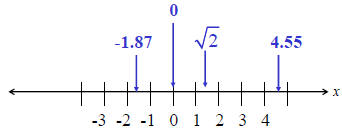
Inequalities, graphs, and notations
| Inequality | Graph | Interval |
 |
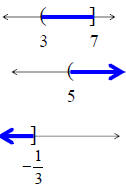 |
 |
) or ( means not included in the solution
] or [ means included in the solution
Intervals
| Interval | Graph | Example |
 |
 |
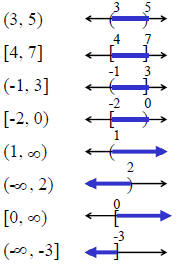 |
Properties of Inequalities
| If a, b, and c are any real numbers, then | Example | |
| Property 1 | If a<b and b<c , then . a <c |
2 < 3 and 3 < 8, so 2 < 8. |
| Property 2 | If a<b then . a +c< b+c |
-5<-3,so -5+2<-3 +2 that is,-3<-1 |
| Property 3 | If a<b and c<0 then ac<bc |
-5<-3,and 2>0,we have (-5)(2)<(-3)(2);that is ,-10< -6 |
| Property 4 | If a<b and c<0 then ab>bc |
-5<4,and -2<0,we have (-5)(-2)>(4)(-2);that is,10>-8 |
Absolute Value
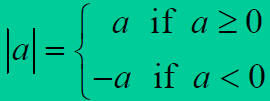

Absolute Value Properties
| If a and b are any real numbers, then | Example | |
| Property 5 | l−a l= lal | l−4l = −(−4) = 4 = l4l |
| Property 6 | la bl = lal lbl | l(2)(−3)l = l−6l = l2l l−3l |
| Property 7 |  |
 |
| Property 8 |  |
 |
Exponents
| n,m positive integers |
Definition | Example |
 |
n factors
|
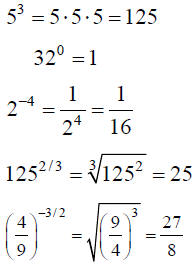 |
Laws of Exponents
| Law | Example |
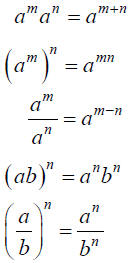 |
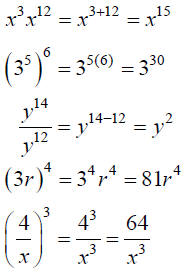 |
Algebraic Expressions
• Polynomials
• Rational Expressions
• Other Algebraic Fractions
Polynomials
• Addition

• Subtraction

Polynomials
• Multiplication
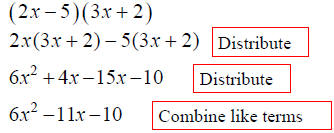
Factoring Polynomials
•Greatest Common Factor

• Grouping
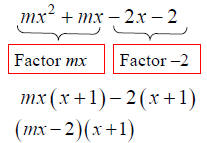
Factoring Polynomials
Difference of Two Squares:

• Sum/Difference of Two Cubes:

Factoring Polynomials
• Trinomials
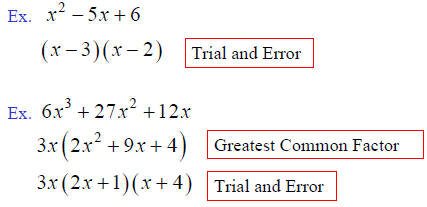
Roots of Polynomials
• Finding roots by factoring
(find where the polynomial = 0)
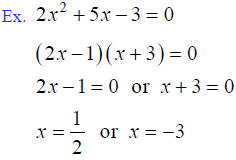
Roots of Polynomials
• Finding roots by the Quadratic Formula
• The Quadratic Formula:
If ax2 + bx + c = 0 (a ≠ 0)
with a, b, and c real numbers,
then

Example
Using the Quadratic Formula:
Ex. Find the roots of 3x2 + 7x +1= 0
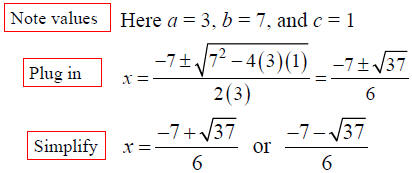
Rational Expressions
| Operation | P, Q, R, and S are polynomials |
| Addition | 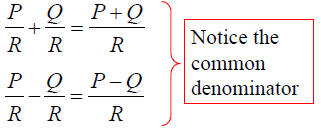 |
| Subtraction | |
| Multiplication | 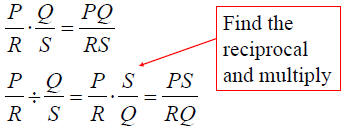 |
| Division |
Rational Expressions

Rational Expressions
• Adding/Subtracting

Other Algebraic Fractions
• Complex Fractions
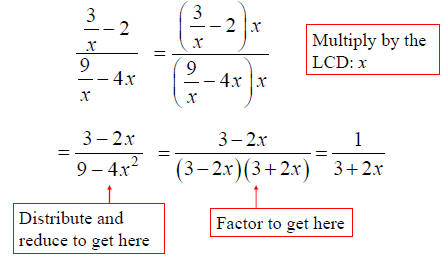
Other Algebraic Fractions
Notice:

• Rationalizing a Denominator
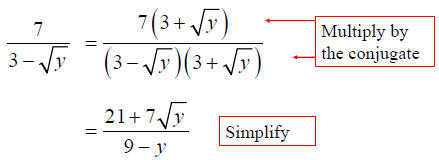
Cartesian Coordinate System
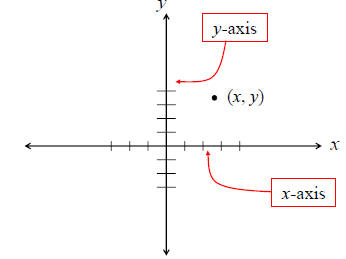
Cartesian Coordinate System
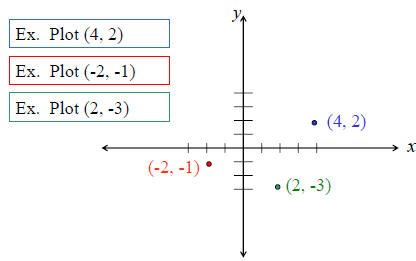
The Distance Formula
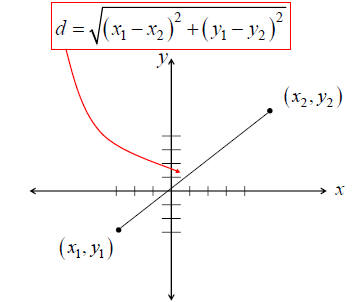
The Distance Formula
Ex. Find the distance between (7, 5) and (-3, -2)
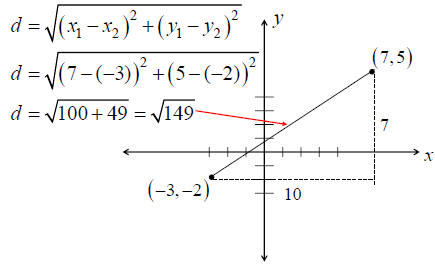
The Equation of a Circle
A circle with center (h, k) and radius of
length r can be expressed in the form:
(x − h)2+ ( y − k )2= r2
| Ex. Find an equation of the circle with center at
(4, 0) and radius of length 3 |

Straight Lines
• Slope
• Point-Slope Form
• Slope-Intercept Form
Slope – the slope of a non-vertical line
that passes through the points
(x1,y1)and (x2,y2)is given by:

| Ex. Find the slope of the line that passes
through the points (4,0) and (6, -3) |

Slope
Two lines are parallel if and only if their
slopes are equal or both undefined
Two lines are perpendicular if and only if
the product of their slopes is –1. That is,
one slope is the negative reciprocal of the
other slope (ex. 3/4 a n d -3/4 ).
Point-Slope Form
An equation of a line that passes through
the point with slope m is given
by:
y − y1 = m x − x1
Ex. Find an equation of the line that passes through (3,1)
and has slope m = 4.
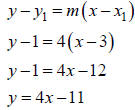
Slope-Intercept Form
An equation of a line with slope m and
y-intercept ( 0 , b ) is given by:
y = mx + b

Vertical Lines
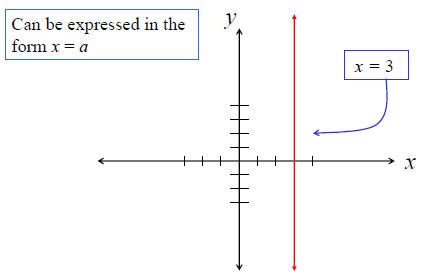
Horizontal Lines
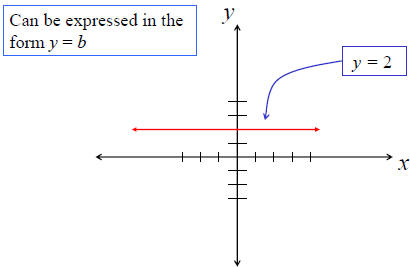
Example
Find an equation of the line that passes
through (-2, 1) and is perpendicular to the line
y = 2x − 7.
Solution:
Step 1.Since the slope of the line y=2x - 7 is 2,
we have the slope of the perpendicular line is m=-1/2 .
Step 2.

Example
Find an equation of the line that passes through
(0, 1) and is parallel to the line 6x + 2 y = 5.
Solution:
Step 1.We need to find the slope of the line
6x + 2 y = 5.

The slope of the parallel line is also m=-3.
Step 2.
Since m=-3 and b=1,




